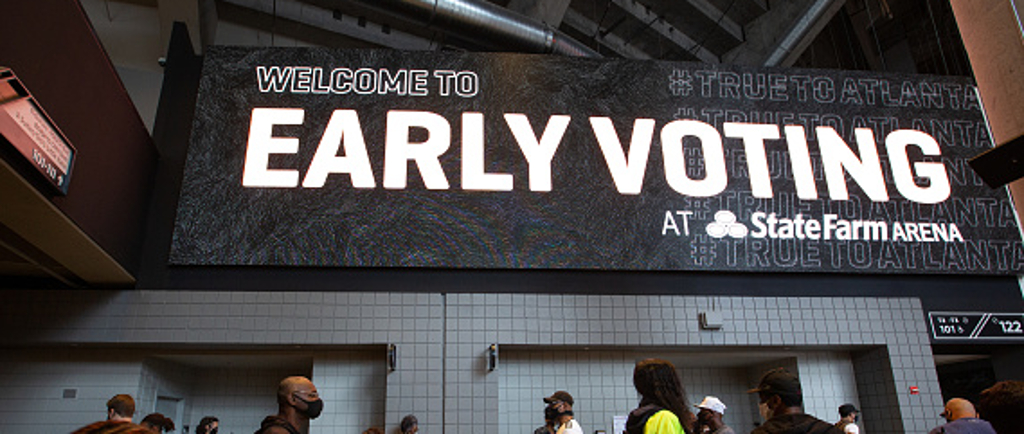
When the NBA decided to briefly stop play in Orlando, it was an effort to put the onus on the league and the owners to come up with a concrete plan to combat social injustice in America. It was partly a response to the police shootings of unarmed Black people, but it also spoke to the larger issue of widespread systemic disenfranchisement among minorities.
Part of the league’s multi-tiered plan involved using team-owned sports arenas around the country as voting sights for the 2020 elections. As officials continue to count ballots, it’s become apparent that those locations may have had a significant impact on the outcome of several key races.
According to data compiled by USA TODAY, just under 300,000 people voted at 40 sports arenas around the country. Among those, the Hawks’ State Farm Arena in Atlanta had the largest turnout, with approximately 40,000 local residents casting their ballots in person there.
Via Josh Peter, Tom Schad, and Jeff Zillgitt of USA TODAY Sports:
No professional sports arena, however, welcomed more voters than the Atlanta Hawks’ State Farm Arena, according to USA TODAY Sports’ data.
Nearly 40,000 Fulton County residents voted at the arena during early voting in Georgia, a key state in which Joe Biden holds a narrow lead over Donald Trump. The team wanted to provide a non-partisan site without long waiting times. With 302 voting machines at physically-distanced locations, poll workers kept lines moving even when there were 3,000 people per day during the first week of early voting.
The Hawks’ arena was one of the first stadium to activate its early voting in the elections and could signal a trend for future elections. However, this particular election cycle was unique and at the use of stadiums was partly a response to the social distancing requirements during the ongoing pandemic, while in a normal year, many of those arenas would’ve been hosting regular events during that time of year.
Regardless, the massive efforts to educate voters and give them fair and ample opportunities to take part in the democratic process is a crucial endeavor in its own right, and the numbers suggest that it’s much more than just a small gesture.
